|
Getty Villa
Page 1 of 4
http://www.getty.edu/visit/
October 1, 2009
Posted December 22, 2009
© 2009, Herbert E. Lindberg
This page is part of a multi-tour
visit with Walt and Hazel:
|
Our third tour was to the Getty Villa in a
beautiful Malibu setting overlooking the ocean. I begin below with some
background material gleaned from the excellent Getty Villa website (link above). Most,
if not all, of the art objects I photographed and present here are given in
more organized form on the Getty Villa website. However, the photographs
here are much larger and varied in only 4 web pages. I give the gleaned
information below to place these pages in perspective. I suggest that you
follow the Getty Villa links after viewing my pages, except for the
12-minute
Getty Villa Video, which
you should view now to put Getty's vision into perspective.
Pompeii
and Mt. Vesuvius figure strongly into the Getty Villa story, so it is
also worthwhile to view an animation of
the Mt. Vesuvius eruption and resulting devastation as viewed from
Pompeii. It is an unforgettable depiction of what it was like:
Vesuvius Eruption
The Getty Villa in Malibu is an
educational center and museum dedicated to the study of the arts and
cultures of ancient Greece, Rome, and Etruria.
Address
17985 Pacific Coast Highway
Pacific Palisades, California 90272
Phone Number
(310) 440-7300
What to See
Greek, Roman, and Etruscan antiquities arranged by themes including Gods and Goddesses, Dionysos and the Theater, and Stories of the Trojan War
Roman-inspired architecture and
gardens
Getty Villa Video (12:22)
This introductory film describes the history, collections, and setting of the Getty Villa.
Admission
Admission
to the Getty Villa and to all exhibitions is FREE. An advance, timed
ticket is required for each adult. Each Villa general admission ticket
allows you to bring up to three children ages 15 and under with you in
one car. (This does not apply to tickets for events, such as lectures
and performances.)
Book
your free tickets to the Getty Villa now.
Parking
and Directions
Parking is $15 per car or motorcycle. It is FREE for all evening public
programming, including theater, music, film, lectures, and other
special programs held after 5:00 p.m.
Opening Hours
Hours for the Getty Villa site and galleries:
Wednesday–Monday 10:00 a.m.–5:00 p.m.
Tuesday
CLOSED
Closed on January 1, July 4, Thanksgiving, and December 25.
The photos here are simply given in the order
they were taken. The museum exhibit rooms are laid out in
chronological order, so the pictures are organized to that extent. Photographs
cover less than 10% of what was on display and a much smaller fraction of
the total Getty collection.
|
| Outdoor theater near the museum entrance (out of
view on the right) |
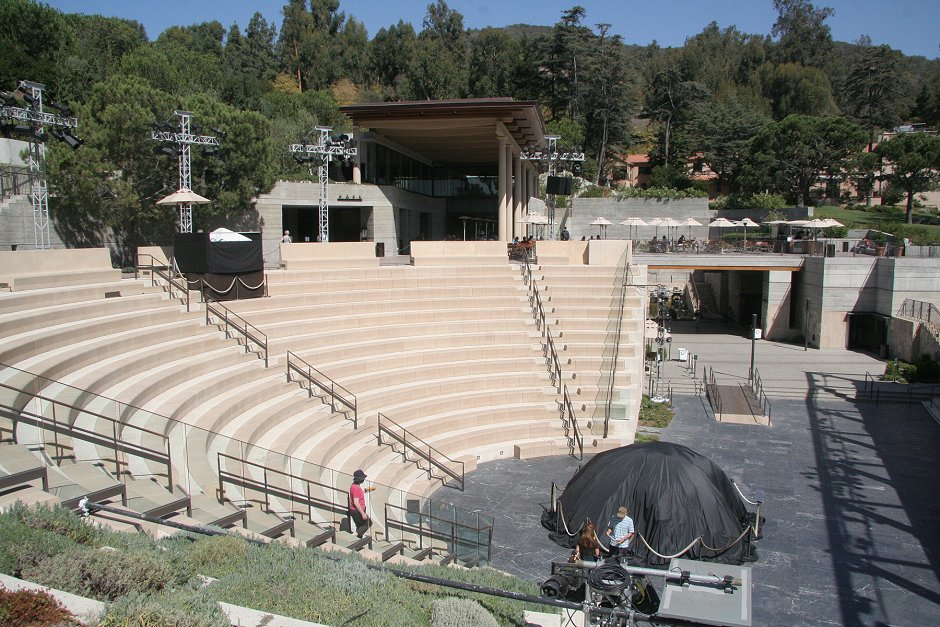 |
| Colonnade
and gathering hall between the outdoor theater and museum entrance. |
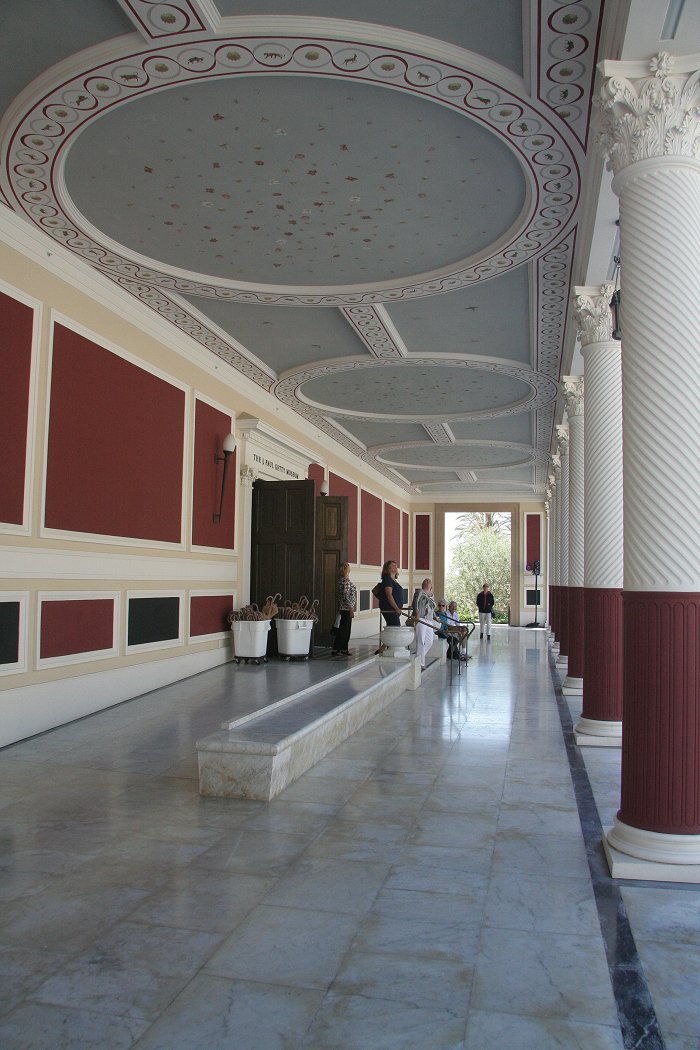 |
| Lorraine
and Dick relax while they wait for me and others. |
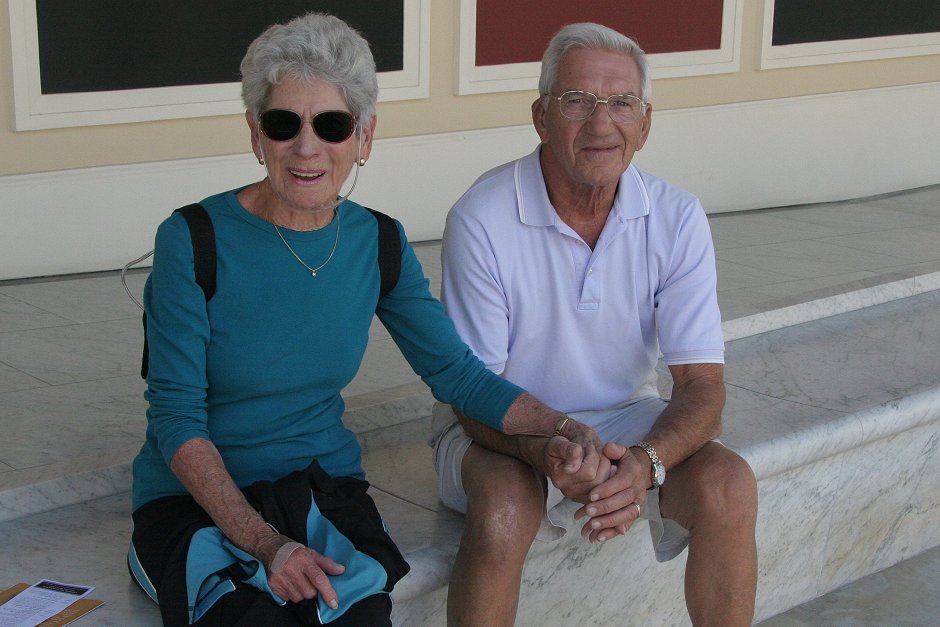 |
| Detail of the colonnade hall |
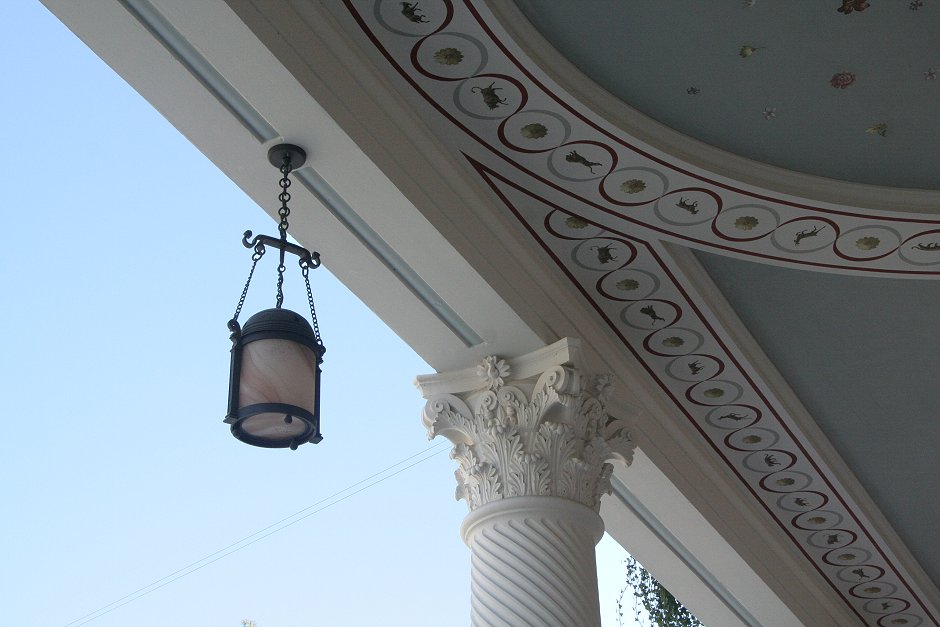 |
Storage Jar with an Episode from "The
Seven against Thebes"
Attributed to Caivano
Painter; Greek, Campania, Italy, about 340 B.C., Terracotta |
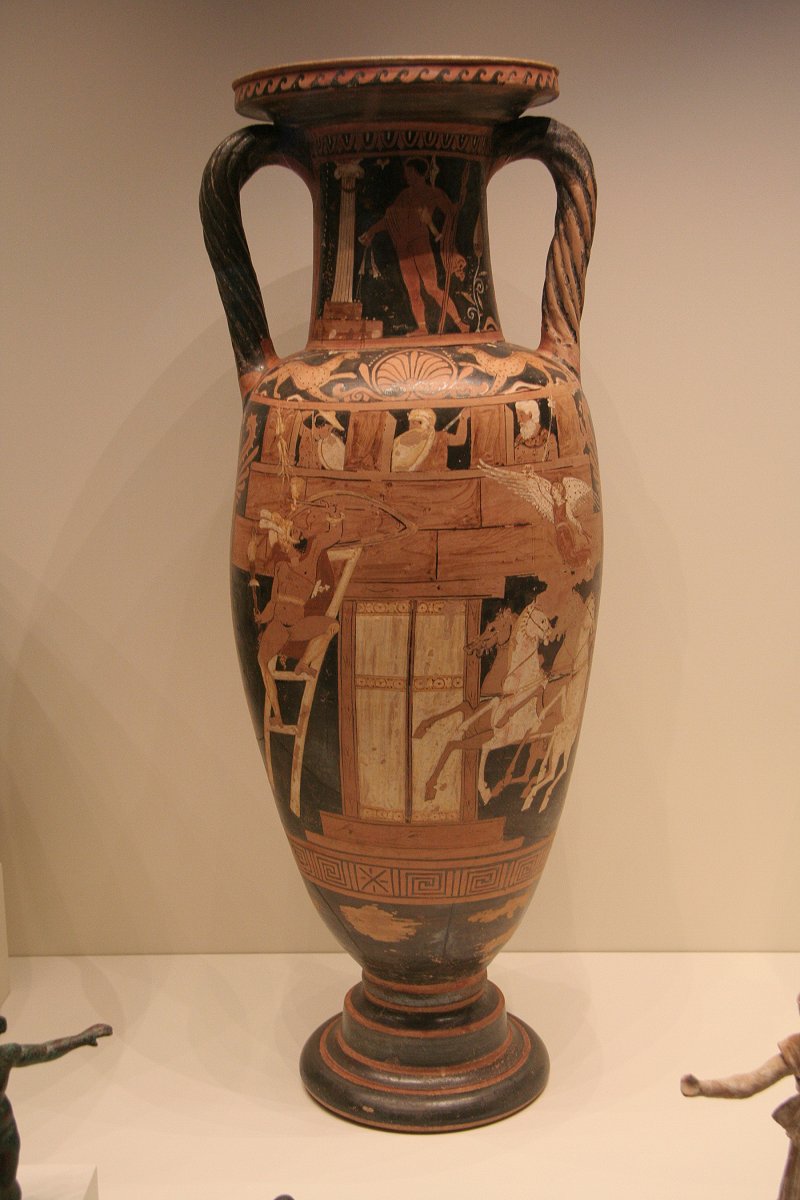 |
| Bowls
and storage jar/vase |
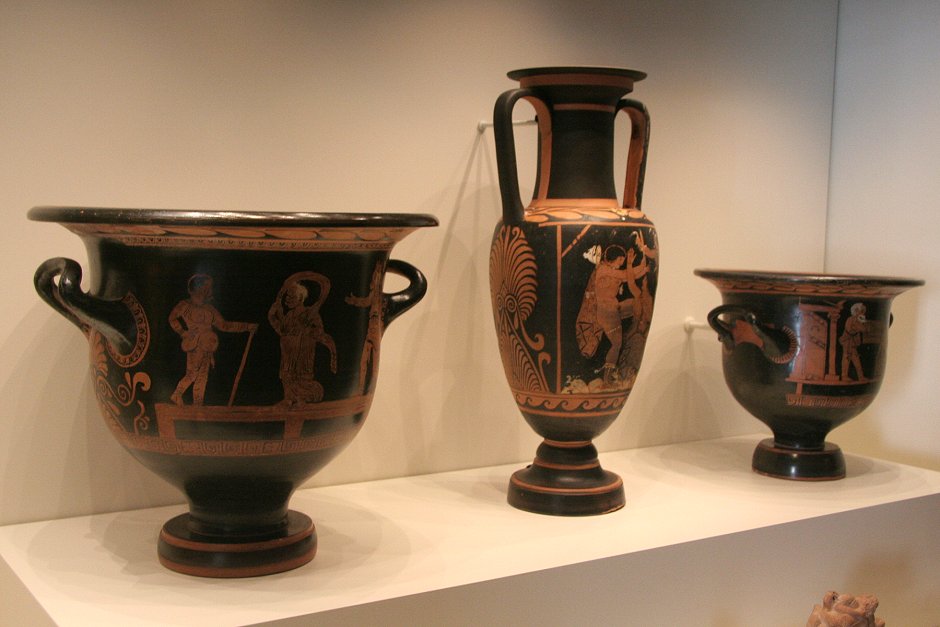 |
| Close-up
of central storage vase
|
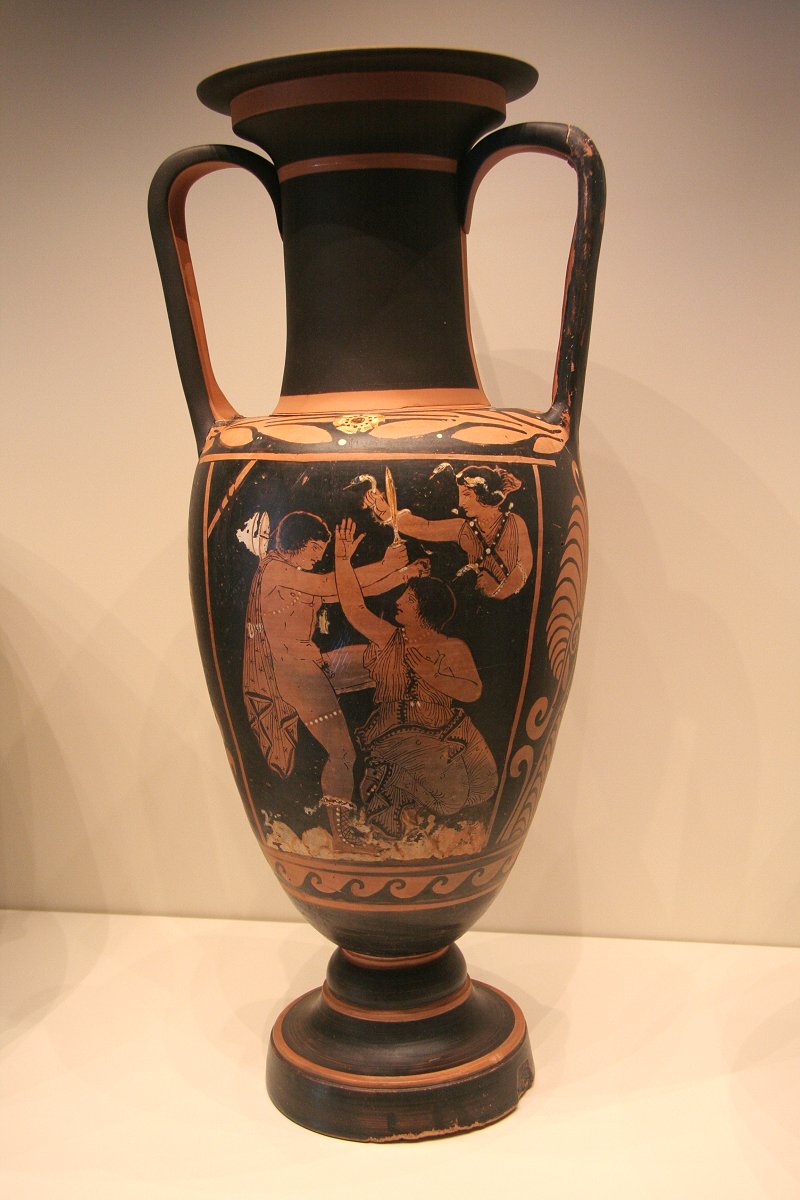 |
Sarcophagus with Scenes of Bacchus;
Unknown artist, Roman, Rome, A.D. 210 - 220.; with supports: 1800s Marble
The inscription on the lid of this sarcophagus identifies
its former occupant, Maconiana Severiana, as being from a senatorial family.
"To the soul of the deceased. For Maconiana Severiana, the sweetest
daughter, Marcus Sempronius Faustinianus, vir clarissimus [holding a
senatorial rank], and Praecilia Severiana, clarissima femina [from a
senatorial family], her parents [had this made]." Given the small size
of the sarcophagus, Maconiana must have been a child or adolescent.
The front of the sarcophagus shows a Dionysiac revel, culminating in the
discovery of the sleeping Ariadne, shown lying down on the right. Abandoned
by the Greek hero Theseus,
Ariadne awakened to a new life with Dionysos,
the god of wine. The goat-legged Pan
lifts the veil from her prone figure while satyrs,
maenads,
and a panther surround the drunken Dionysos.
The back of the sarcophagus shows another Dionysiac scene of winemaking
carved in a simpler, flatter style. Panels with related figures flanking the
central inscription on the lid. For the Romans, Dionysos was associated with
the hope of a better afterlife; thus many sarcophagi show the god and his
followers.
Sculpted stone sarcophagi, which came into use in the 200s A.D., soon became
symbols of wealth and status. Since Romans favored certain themes for
sarcophagi, they were often bought ready-made and then customized by the
addition of a portrait of the deceased. The blank face of Ariadne should
have been carved as a portrait of Maconiana Severiana. Why it was left blank
in this instance is not clear.
|
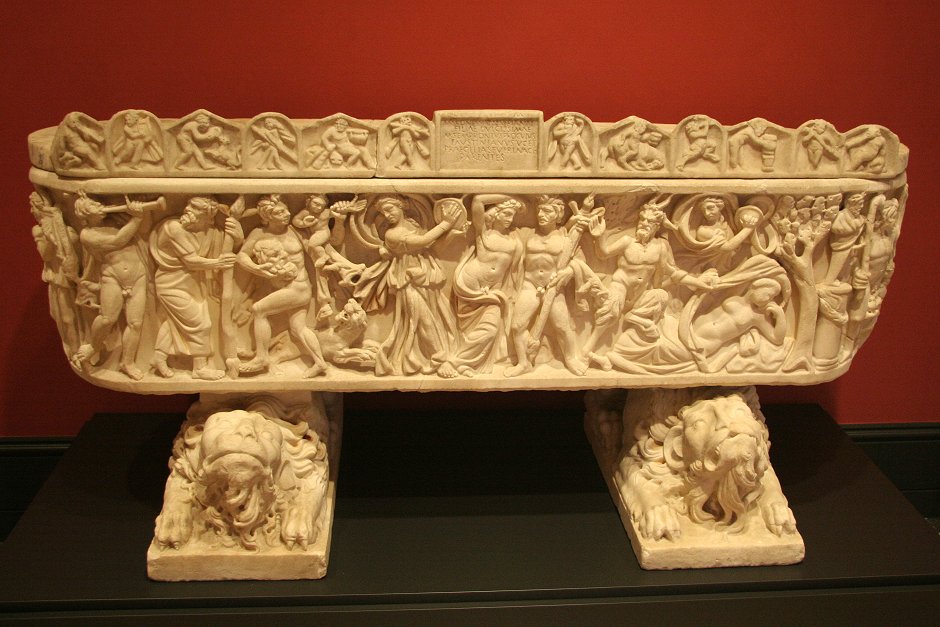 |
| Pair
of vases |
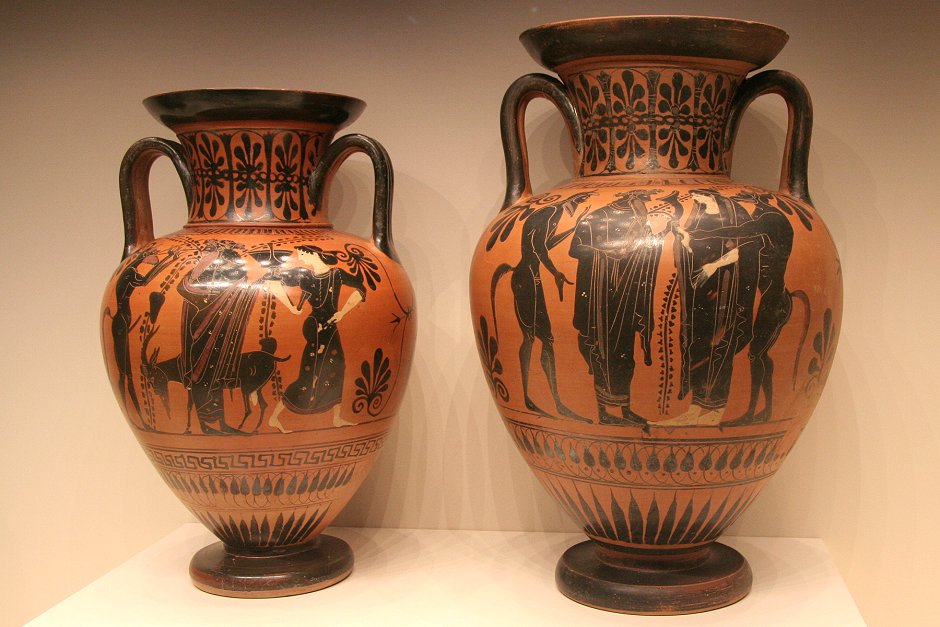 |
Lidded
Cauldron with a Satyr; Greek, made in the eastern Mediterranean, 50--1
B.C., Bronze and silver, Lebes
A lively satyr
springs from a swirl of flowering tendrils, grape leaves, and plants. He
decorates a cauldron that probably functioned as the centerpiece of an
elaborate wine service for some aspect of the cult of Dionysos (God of wine).
The satyr bares his silvered teeth in a wild, impudent grin as he gestures
toward the wine that would have been stored inside the vessel.
|
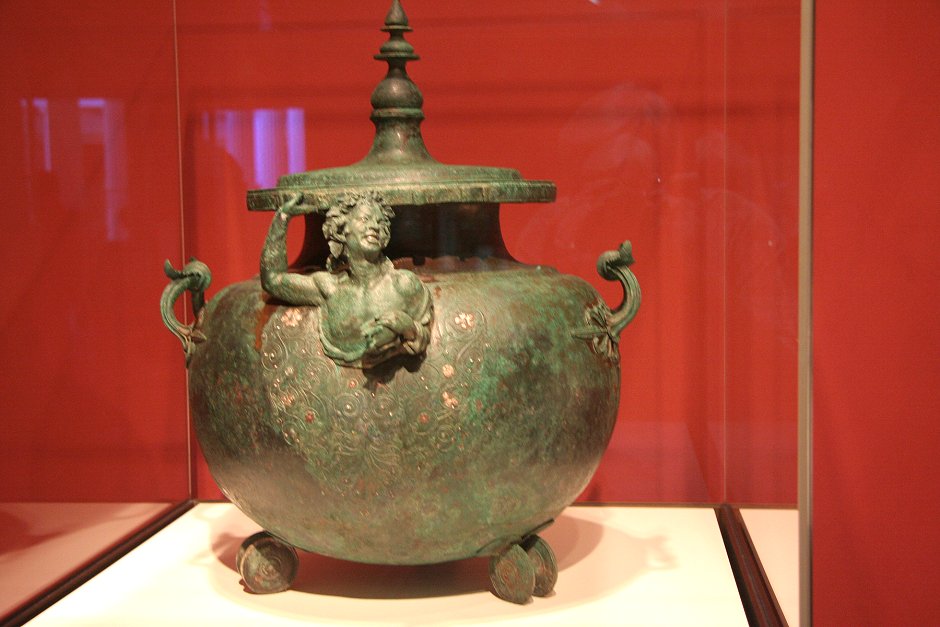 |
| Close-up
of Satyr |
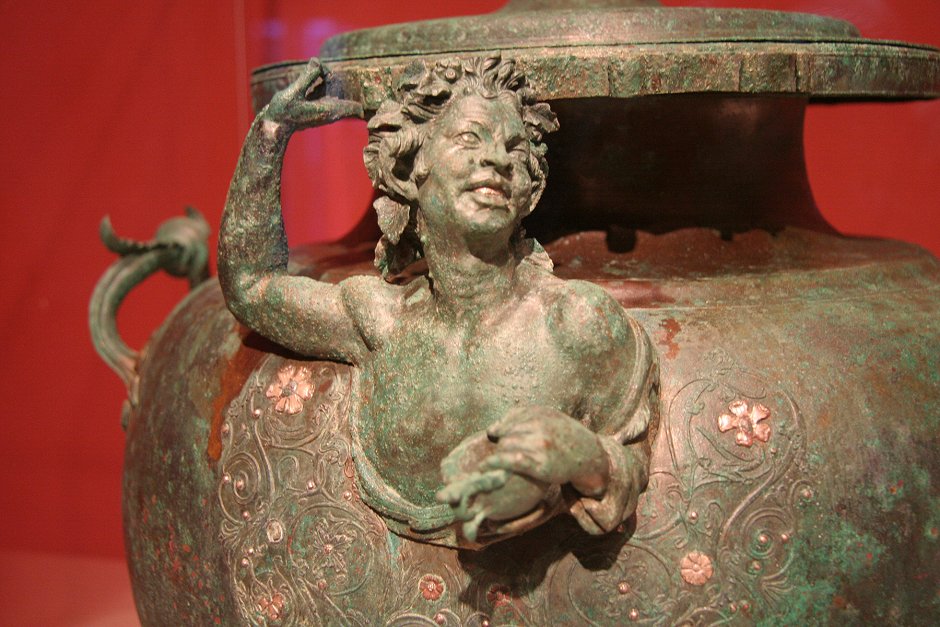 |
Mixing
Vessel with a Deceased Youth; Greek, made in Apulia, South Italy, 330-320
B.C.
Terracotta; Red-figured volute krater attributed to the Underworld
Painter
On this mixing
vessel made for dedication at a cemetery, a nude youth sits within a small
building. The white covering his body indicates that he is deceased. The comic
mask he holds and the open scroll lying on the ground beneath him show that he
was either an actor or a playwright.
|
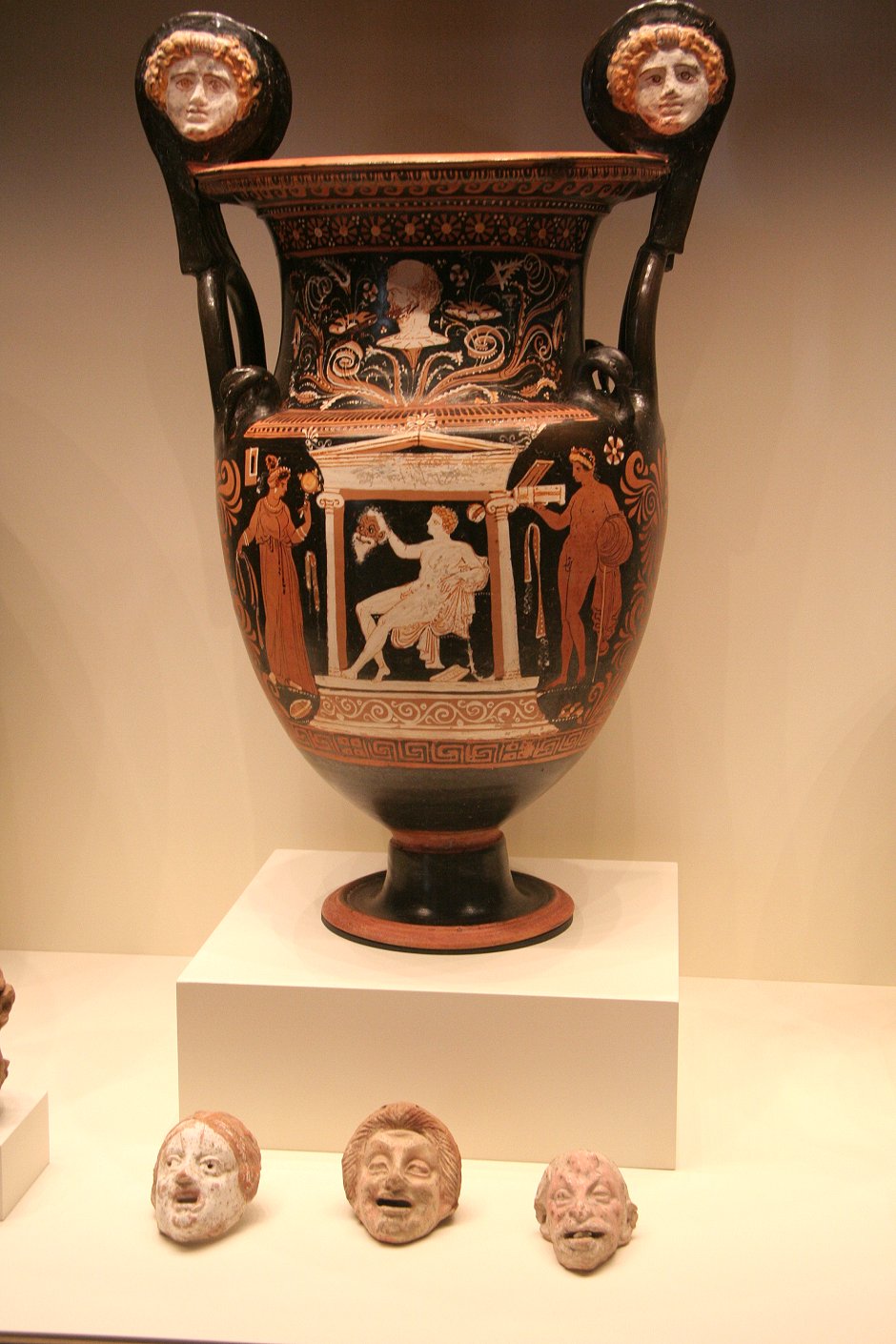 |
Miniature
Theater Masks
The Greek
playwright Menander (342--291 B.C.) popularized New Comedy, so named in contrast
to the Old Comedy of Aristophanes (448--386 B.C.). Menander's plays
significantly influenced the later development of Roman Comedy. Conventional
plot lines of New Comedy involve stock characters such as elderly couples,
slaves, and young lovers, who always triumph over the numerous obstacles placed
in their path to happiness. These comedic characters provided subject matter for
miniature taracotta theater masks, which were pierced with holes for suspension
and display.
|
| Close-up
of a theater mask |
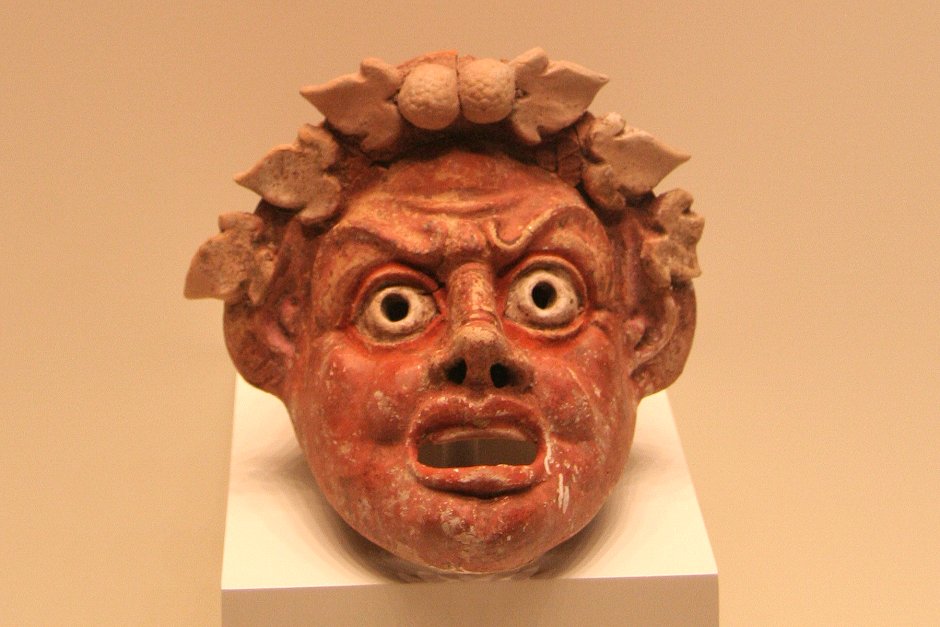 |
Bust of Menander; Roman, A.D. 100 - 150,
Marble
This Roman herm depicts the Greek comic playwright Menander,
who lived from about 342 to 291 B.C. The herm reproduces the head of a lost
Greek bronze portrait statue by Kephisodotos the Younger and Timarchos, the
sons of the artist Praxiteles. The Roman writer Pausanias
mentions the original Greek bronze statue, which was set up in the Theater
of Dionysos in Athens shortly after Menander's death.
The middle-aged man shown in this portrait is known from several other
versions of the statue, and the occasional example inscribed with his name
confirms the identification of all of these versions as Menander. His plays
enjoyed a resurgence of popularity in the Roman period, creating a demand
for portraits of him.
Beginning in the 500s B.C., Greeks placed herms,
pillars surmounted by a head of the god Hermes,
at physical boundaries, such as crossroads or even doorways. Such places
were sites of ritual and worship where the herms served a magical,
protective function. The Romans later adapted the Greek concept of the herm,
using it for non-religious, decorative purposes. The heads on Roman herms
are often portraits of famous people.
|
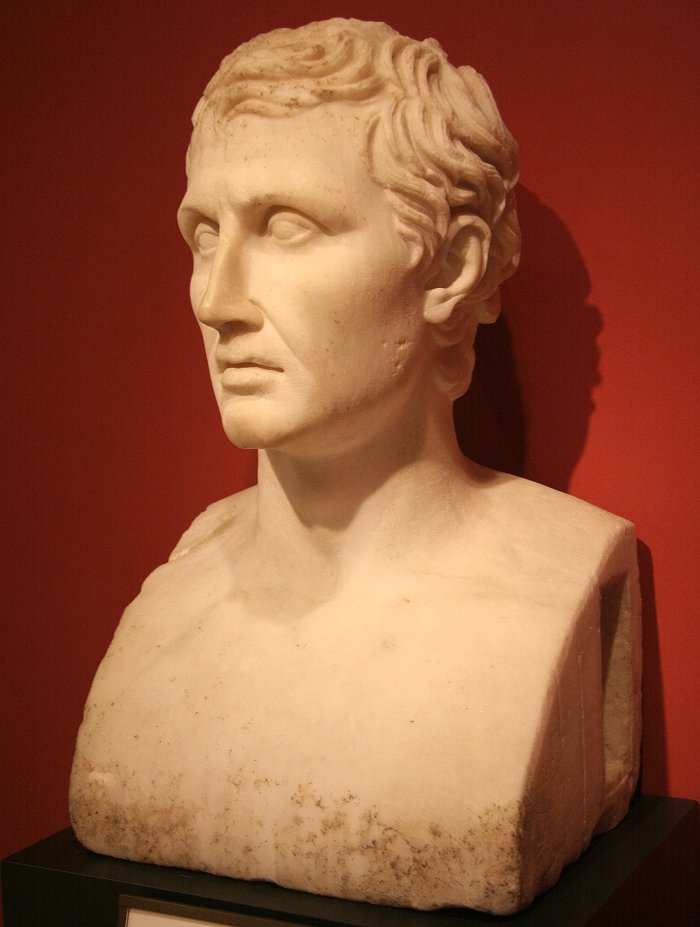 |
Continue to Page 2 | Home
|